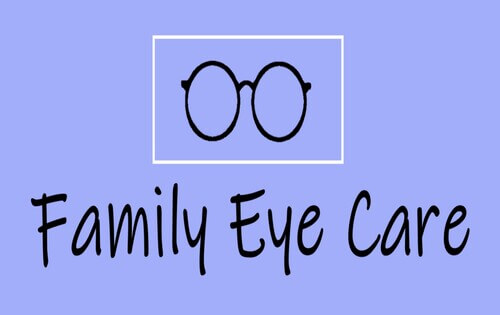Andalusia Pediatrics Clinics: Dedicated Look After Your Child's Health
The Advantages And Disadvantages of Different Refractive Surgeries for Improved Eyecare

LASIK Surgical Treatment
LASIK surgery is a generally performed refractive treatment that intends to fix vision concerns such as farsightedness, astigmatism, and nearsightedness. This surgical technique has obtained popularity because of its effectiveness in supplying clients with more clear vision and lowering their dependence on glasses or call lenses. Throughout the treatment, a thin flap is created on the cornea, and a laser is utilized to improve the underlying cells, dealing with the refractive mistake. The flap is after that rearranged, permitting fast recovery and marginal pain for the client.
One of the primary advantages of LASIK surgical procedure is the rapid improvement in vision experienced by several patients. Most people see a significant improvement in their sight soon after the treatment, with marginal downtime required for recuperation. In addition, LASIK is known for its high success rate and low incidence of complications when executed by competent cosmetic surgeons. Nonetheless, like any type of operation, LASIK also carries some dangers, including completely dry eyes, glare, halos, and under or overcorrection of vision. It is crucial for people taking into consideration LASIK surgical procedure to go through a complete examination by an eye treatment professional to determine if they are suitable prospects for the procedure.
PRK Procedure
The PRK treatment, likewise known as Photorefractive Keratectomy, is a sort of refractive surgical procedure that aims to correct vision problems comparable to LASIK surgical treatment. Unlike LASIK, which entails creating a flap in the cornea, PRK works with the surface area layer of the cornea. Throughout the PRK treatment, the outer layer of the cornea, called the epithelium, is gotten rid of to enable improving of the underlying corneal tissue with an excimer laser. This improving assists to deal with refractive mistakes such as nearsightedness, astigmatism, and farsightedness.
One of the benefits of PRK over LASIK is that it gets rid of the risk of flap-related complications given that no flap is developed throughout the surgical treatment. Despite the longer recovery period, PRK can be an ideal alternative for people seeking vision modification surgical procedure.
SMILE Surgical Treatment
An innovative refractive surgical treatment technique obtaining popularity in websites the field of ophthalmology is SMILE Surgical procedure. Little Incision Lenticule Removal (SMILE) is a minimally intrusive treatment that fixes vision by reshaping the cornea using a femtosecond laser. Unlike traditional LASIK surgery, SMILE Surgical procedure involves producing a small incision in the cornea to remove a lenticule, which results in much less disruption to the corneal framework and potentially much faster recovery times.
Among the main advantages of SMILE Surgery is its capability to deal with nearsightedness (nearsightedness) and astigmatism with high accuracy, resulting in superb visual results for clients. The minimally intrusive nature of the treatment likewise lowers the risk of difficulties such as completely dry eye syndrome, making it a desirable alternative for individuals seeking refractive surgical treatment.

LASEK Technique
Having actually explored the benefits and factors to consider of SMILE Surgery, an additional notable refractive surgery technique worth checking out is the LASEK Technique. LASEK, which stands for Laser-Assisted Subepithelial Keratectomy, is a type of laser eye surgery that aims to remedy refractive errors such as myopia (nearsightedness), hyperopia (farsightedness), and astigmatism.
Unlike LASIK, LASEK does not involve developing a corneal flap. Instead, throughout a LASEK treatment, the surgeon utilizes a watered down alcohol option to loosen the thin external layer of the cornea, known as the epithelium.
One of the primary advantages of LASEK is that it can be appropriate for people with slim corneas that may not be good candidates for LASIK. Furthermore, LASEK typically results in very little post-operative discomfort and a quicker recovery time compared to PRK. The visual healing procedure with LASEK might be a little longer than with LASIK.
Implantable Get In Touch With Lenses
Implantable Call Lenses supply a lasting vision adjustment service for people looking for a choice to typical get in touch with lenses or glasses. These lenses, also referred to as phakic intraocular lenses, are operatively put into the eye to correct refractive errors such as nearsightedness (nearsightedness), hyperopia (farsightedness), and astigmatism. cardiologist useful content andalusia. Unlike conventional contact lenses that remain on the surface area of the eye, implantable contact lenses work within the eye itself, providing clear vision without the demand for day-to-day maintenance or elimination
Among the crucial benefits of implantable call lenses is their durability. When placed, they can continue to be in the eye indefinitely, supplying regular and steady vision improvement. In addition, these lenses can be an exceptional option for individuals who are not great candidates for laser eye surgery or who choose a reversible vision correction treatment.
Nonetheless, implantable contact lenses do lug some threats, consisting of the potential for cataracts or raised eye stress. It is vital for individuals considering this choice to speak with an eye care specialist to figure out if implantable get in touch with lenses are the right option for their particular needs and eye wellness.
Final Thought
In final thought, each kind of refractive surgical treatment has its own benefits and disadvantages. LASIK surgical treatment is popular for its fast recovery time, while PRK procedure may be ideal for patients with slim corneas.

On The Whole, SMILE Surgery presents an appealing choice for people looking to boost their vision via refractive surgical treatment.